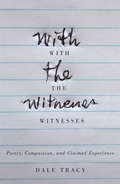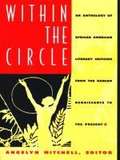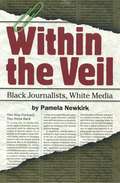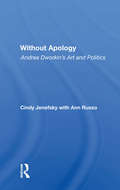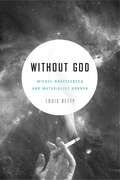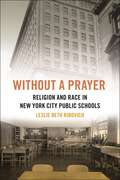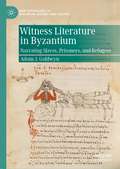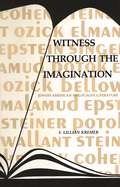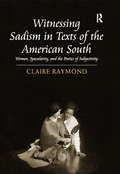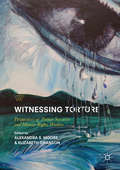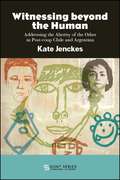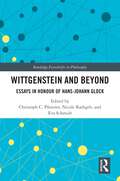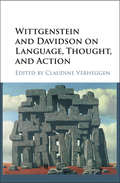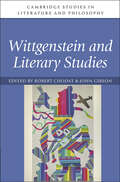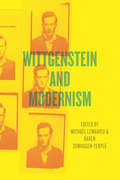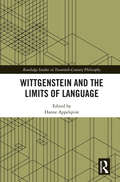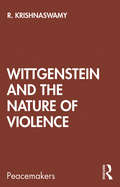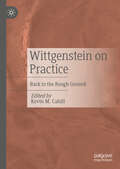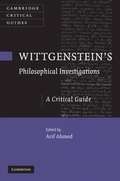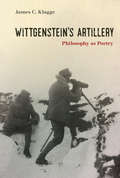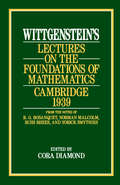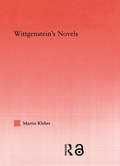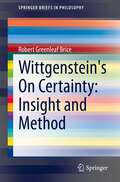- Table View
- List View
With the Witnesses: Poetry, Compassion, and Claimed Experience
by Dale TracyWhile trauma theory has been adopted by contemporary literary and cultural studies as an ethical way to study depictions of suffering, there is a risk that its present use could cause more harm than good. By emphasizing inaccessible histories, unspeakable suffering, and unconscious witnessing, trauma theory may lead readers to claim others’ suffering through empathic identification. In With the Witnesses, Dale Tracy argues that poetry offers an alternative approach to engage with not only suffering in art but suffering in general. Examining the strategies of witness poetry, Tracy interrogates and reformulates the dominant models of trauma studies in which readers take over the witnessing position by identifying with the speaker as a witness, thus becoming witnesses themselves. If the purpose of reading such poetry is to contribute new witnesses to a chain, what is the distinct role of a reader? How does this role differ from the speaker of a poem’s role? Tracy proposes that metonymy – a logic of nearness rather than likeness – is compassion’s formal manifestation. Analyzing poetry that emphasizes the contiguity of metonymy over the substitution of metaphor, she attends to the positions into which witnessing speakers invite readers. Poems that respond to diverse national and transnational contexts of atrocity, conflict, and marginalization guide With the Witnesses toward a compassionate response to suffering that involves feeling with – not as – another. Following each poem as a unique theory of compassion, With the Witnesses demonstrates that poems hold suffering signed as art, not claimable traces of suffering.
Within the Circle: An Anthology of African American Literary Criticism from the Harlem Renaissance to the Present
by Angelyn MitchellWithin the Circle is the first anthology to present the entire spectrum of twentieth-century African American literary and cultural criticism. It begins with the Harlem Renaissance, continues through civil rights, the Black Arts Movement, and on into contemporary debates of poststructuralist and black feminist theory. Drawing on a quote from Frederick Douglass for the title of this book, Angelyn Mitchell explains in her introduction the importance for those "within the circle" of African American literature to examine their own works and to engage this critical canon.The essays in this collection--many of which are not widely available today--either initiated or gave critical definition to specific periods or movements of African American literature. They address issues such as integration, separatism, political action, black nationalism, Afrocentricity, black feminism, as well as the role of art, the artist, the critic, and the audience. With selections from Langston Hughes, Sterling Brown, W. E. B. DuBois, Zora Neale Hurston, Richard Wright, James Baldwin, Toni Morrison, Barbara Smith, Alice Walker, Henry Louis Gates, Jr., and many others, this definitive collection provides a dynamic model of the cultural, ideological, historical, and aesthetic considerations in African American literature and literary criticism.A major contribution to the study of African American literature, this volume will serve as a foundation for future work by students and scholars. Its importance will be recognized by all those interested in modern literary theory as well as general readers concerned with the African American experience.Selections by (partial list): Houston A. Baker, Jr., James Baldwin, Sterling Brown, Barbara Christian, W. E. B. DuBois, Ralph Ellison, LeRoi Jones, Sarah Webster Fabio, Henry Louis Gates, Jr., W. Lawrence Hogue, Langston Hughes, Zora Neale Hurston, Alain Locke, Deborah E. McDowell, Toni Morrison, J. Saunders Redding, George Schuyler, Barbara Smith, Valerie Smith, Hortense J. Spillers, Robert B. Stepto, Alice Walker, Margaret Walker, Mary Helen Washington, Richard Wright
Within the Veil: Black Journalists, White Media
by Pamela NewkirkWinner of the National Press Club Prize for Media CriticismUnmasks race-related conflicts in the newsrooms and the push for more equitable coverage of racial minorities Thirty years ago, the Kerner Commission Report made national headlines by exposing the consistently biased coverage afforded African Americans in the mainstream media. While the report acted as a much ballyhooed wake-up call, the problems it identified have stubbornly persisted, despite the infusion of black and other racial minority journalists into the newsroom. In Within the Veil, Pamela Newkirk unmasks the ways in which race continues to influence reportage, both overtly and covertly. Newkirk charts a series of race-related conflicts at news organizations across the country, illustrating how African American journalists have influenced and been denied influence to the content, presentation, and very nature of news. Through anecdotes culled from interviews with over 100 broadcast and print journalists, Newkirk exposes the trials and triumphs of African American journalists as they struggle in pursuit of more equitable coverage of racial minorities. She illuminates the agonizing dilemmas they face when writing stories critical of blacks, stories which force them to choose between journalistic integrity, their own advancement, and the almost certain enmity of the black community. Within the Veil is a gripping front-line report on the continuing battle to integrate America's newsrooms and news coverage.Companion website: http://www.nyupress.nyu.edu/authors/veil.html
Without Apology: Andrea Dworkin's Art And Politics
by Cindy JenefskyThis is the first-ever book-length analysis of Dworkins feminist politics and the first critical analysis to examine her controversial political ideas in light of the literary dimensions of her prose. Cindy Jenefsky, with Ann Russo, looks at Dworkin’s major nonfiction works including Woman Hating, Pornography: Men Possessing Women, and Intercourse
Without God: Michel Houellebecq and Materialist Horror
by Louis BettyMichel Houellebecq is France’s most famous and controversial living novelist. Since his first novel in 1994, Houellebecq’s work has been called pornographic, racist, sexist, Islamophobic, and vulgar. His caricature appeared on the cover of the French satirical weekly Charlie Hebdo on January 7, 2015, the day that Islamist militants killed twelve people in an attack on their offices and also the day that his most recent novel, Soumission—the story of France in 2022 under a Muslim president—appeared in bookstores. Without God uses religion as a lens to examine how Houellebecq gives voice to the underside of the progressive ethos that has animated French and Western social, political, and religious thought since the 1960s.Focusing on Houellebecq’s complicated relationship with religion, Louis Betty shows that the novelist, who is at best agnostic, “is a deeply and unavoidably religious writer.” In exploring the religious, theological, and philosophical aspects of Houellebecq’s work, Betty situates the author within the broader context of a French and Anglo-American history of ideas—ideas such as utopian socialism, the sociology of secularization, and quantum physics. Materialism, Betty contends, is the true destroyer of human intimacy and spirituality in Houellebecq’s work; the prevailing worldview it conveys is one of nihilism and hedonism in a postmodern, post-Christian Europe. In Betty’s analysis, “materialist horror” emerges as a philosophical and aesthetic concept that describes and amplifies contemporary moral and social decadence in Houellebecq’s fiction.
Without a Prayer: Religion and Race in New York City Public Schools (North American Religions #24)
by Leslie Beth RibovichReframes religion’s role in twentieth-century American public educationThe processes of secularization and desegregation were among the two most radical transformations of the American public school system in all its history. Many regard the 1962 and 1963 US Supreme Court rulings against school prayer and Bible-reading as the end of religion in public schools. Likewise, the 1954 Brown v. Board of Education case is seen as the dawn of school racial equality. Yet, these two major twentieth-century American educational movements are often perceived as having no bearing on one another.Without a Prayer redefines secularization and desegregation as intrinsically linked. Using New York City as a window into a national story, the volume argues that these rulings failed to successfully remove religion from public schools, because it was worked into the foundation of the public education structure, especially how public schools treated race and moral formation. Moreover, even public schools that were not legally segregated nonetheless remained racially segregated in part because public schools rooted moral lessons in an invented tradition—Judeo-Christianity—and in whiteness.The book illuminates how both secularization and desegregation took the form of inculcating students into white Christian norms as part of their project of shaping them into citizens. Schools and religious and civic constituents worked together to promote programs such as juvenile delinquency prevention, moral and spiritual values curricula, and racial integration advocacy. At the same time, religiously and racially diverse community members drew on, resisted, and reimagined public school morality.Drawing on research from a number of archival repositories, newspaper and legal databases, and visual and material culture, Without a Prayer shows how religion and racial discrimination were woven into the very fabric of public schools, continuing to inform public education’s everyday practices even after the Supreme Court rulings.
Witness Literature in Byzantium: Narrating Slaves, Prisoners, and Refugees (New Approaches to Byzantine History and Culture)
by Adam J. GoldwynThis book analyzes Byzantine examples of witness literature, a genre that focuses on eyewitness accounts written by slaves, prisoners, refugees, and other victims of historical atrocity. It focuses on such episodes in three nonfictional texts – John Kaminiates’ Capture of Thessaloniki (904), Eustathios of Thessaloniki’s Capture of Thessaloniki (1186), and Niketas Choniates’ History (ca. 1204–17) – and the three extant twelfth-century Komnenian novels to consider how the authors’ positions as both eyewitness and victim require an interpretive method that distinguishes witness literature from other kinds of writing about the past. Drawing on theoretical developments in the fields of Holocaust and Genocide Studies (such as Giorgio Agamben’s homo sacer and Michel Foucault’s biopolitics) and comparisons with modern examples (Elie Wiesel’s Night and Primo Levi’s If This is a Man), Witness Literature emphasizes the affective, subjective, and experiential in medieval Greek historical writing.
Witness Through the Imagination: Jewish American Holocaust Literature
by S. Lillian Kremer Dr Lilian KremerCriticism of Holocaust literature is an emerging field of inquiry, and as might be expected, the most innovative work has been concentrated on the vanguard of European and Israeli Holocaust literature. Now that American fiction has amassed an impressive and provocative Holocaust canon, the time is propitious for its evaluation. Witness through the Imagination presents a critical reading of themes and stylistic strategies of major American Holocaust fiction to determine its capacity to render the prelude, progress, and aftermath of the Holocaust. <P><P> The unifying critical approach is the textual explication of themes and literary method, occasional comparative references to international Holocaust literature, and a discussion of extra-literary Holocaust sources that have influenced the creative writers' treatment of the Holocaust universe.
Witnessing Girlhood: Toward an Intersectional Tradition of Life Writing
by Elizabeth Marshall Leigh GilmoreWhen more than 150 women testified in 2018 to the sexual abuse inflicted on them by Dr. Larry Nassar when they were young, competitive gymnasts, they exposed and transformed the conditions that shielded their violation, including the testimonial disadvantages that cluster at the site of gender, youth, and race. In Witnessing Girlhood, Leigh Gilmore and Elizabeth Marshall argue that they also joined a long tradition of autobiographical writing led by women of color in which adults use the figure and narrative of child witness to expose harm and seek justice. Witnessing Girlhood charts a history of how women use life narrative to transform conditions of suffering, silencing, and injustice into accounts that enjoin ethical response. Drawing on a deep and diverse archive of self-representational forms—slave narratives, testimonio, memoir, comics, and picture books—Gilmore and Marshall attend to how authors return to a narrative of traumatized and silenced girlhood and the figure of the child witness in order to offer public testimony. Emerging within these accounts are key scenes and figures that link a range of texts and forms from the mid–nineteenth century to the contemporary period. Gilmore and Marshall offer a genealogy of the reverberations across timelines, self-representational acts, and jurisdictions of the child witness in life writing. Reconstructing these historical and theoretical trajectories restores an intersectional testimonial history of writing by women of color about sexual and racist violence to the center of life writing and, in so doing, furthers our capacity to engage ethically with representations of vulnerability, childhood, and collective witness.
Witnessing Sadism in Texts of the American South: Women, Specularity, and the Poetics of Subjectivity
by Claire RaymondLooking at works by Carrie Mae Weems, Toni Morrison, Emily Dickinson, Flannery O'Connor, Dorothy Allison, Carson McCullers, and Zora Neale Hurston, Claire Raymond uncovers a pattern of femininity constructed around representations of sadistic violence in American women's literature and photography from the late nineteenth and twentieth centuries. Dickinson's poetry is read through its relationship to the Southern Agrarian critics who championed her work. While the representations of violence found in Carrie Mae Weems's installation From Here I Saw What Happened and I Cried, Morrison's Beloved, Dickinson’s poetry, O'Connor's 'A View of the Woods' and 'A Good Man Is Hard to Find,' Allison's Bastard Out of Carolina, McCullers' Ballad of the Sad Café, and Hurston's Mules and Men are diverse in terms of artistic presentation, all allude to or are set in the antebellum and Jim Crow South. In addition, all involve feminine characters whose subjectivity is shaped by the practice of seeing acts of violence inflicted where there can be no effective resistance. While not proposing an equivalence between representing violence in visual images and written text, Raymond does suggest that visual images of violence can be interpreted in context with written evocations of violent imagery. Invoking sadism in its ethical sense of violence enacted on a victim for whom self-defense and recourse of any kind are impossible, Raymond's study is ultimately an exploration of the idea that a femininity constructed by the positioning of feminine characters as witnesses to sadistic acts is a phenomenon distinctly of the American South that is linked to the culture's history of racism.
Witnessing Torture: Perspectives of Torture Survivors and Human Rights Workers (Palgrave Studies in Life Writing)
by Elizabeth Swanson Alexandra S. MooreThis book demonstrates a new, interdisciplinary approach to life writing about torture that situates torture firmly within its socio-political context, as opposed to extending the long line of representations written in the idiom of the proverbial dark chamber. By dismantling the rhetorical divide that typically separates survivors’ suffering from human rights workers’ expertise, contributors engage with the personal, professional, and institutional dimensions of torture and redress. Essays in this volume consider torture from diverse locations – the Philippines, Argentina, Sudan, and Guantánamo, among others. From across the globe, contributors witness both individual pain and institutional complicity; the challenges of building communities of healing across linguistic and national divides; and the role of the law, art, writing, and teaching in representing and responding to torture.
Witnessing beyond the Human: Addressing the Alterity of the Other in Post-coup Chile and Argentina (SUNY series, Literature . . . in Theory)
by Kate JenckesThis book rethinks the nature of testimony beyond the ground of the human in works produced in Chile and Argentina from the 1970s to the present. Focusing on literature by Juan Gelman, Sergio Chejfec, and Roberto Bolaño, as well as art by Eugenio Dittborn, Kate Jenckes argues that these works represent life, death, and the relation between self and other "beyond the human," that is beyond the sense that we can know and represent ourselves and others, with powerful implications for our understanding of history, community, and politics. Jenckes engages with the work of Jacques Derrida together with the intellectually rigorous field of Chilean aesthetic theory to explore issues related to the nature of testimony.
Wittgenstein and Beyond: Essays in Honour of Hans-Johann Glock (Routledge Festschrifts in Philosophy)
by Eva Schmidt Christoph C. Pfisterer Nicole RathgebThis volume celebrates the work of Hans-Johann Glock, a philosopher renowned for both his exegesis of Wittgenstein and his many contributions to debates in contemporary philosophy. It brings together 16 new essays by up-and-coming and distinguished philosophers engaging with Glock’s work, and it concludes with a "Reflections and Replies" chapter in which Glock responds to his interlocutors. Glock’s distinctive philosophical voice features a rare combination of a Wittgenstein-inspired approach with a willingness to break away from Wittgenstein to tackle problems in an open-minded way. The broad selection of essays included in this volume reflects Glock’s wide-ranging philosophical interests and demonstrates the potential of applying Wittgensteinian insights to advance current systematic debates in philosophy. The chapters discuss Wittgenstein’s philosophy, metaphilosophy, truth and language, animal minds and agency, and reasons and normativity. Wittgenstein and Beyond will appeal to scholars and advanced students working on Wittgenstein, metaphilosophy, philosophy of mind, and philosophy of language.
Wittgenstein and Davidson on Language, Thought, and Action
by Verheggen ClaudineWittgenstein and Davidson are two of the most influential and controversial figures of twentieth-century philosophy. However, whereas Wittgenstein is often regarded as a deflationary philosopher, Davidson is considered to be a theory builder and systematic philosopher par excellence. Consequently, little work has been devoted to comparing their philosophies with each other. In this volume of new essays, leading scholars show that in fact there is much that the two share. By focusing on the similarities between Wittgenstein and Davidson, their essays present compelling defences of their views and develop more coherent and convincing approaches than either philosopher was able to propose on his own. They show how philosophically fruitful and constructive reflection on Wittgenstein and Davidson continues to be, and how relevant the writings of both philosophers are to current debates in philosophy of mind, language, and action.
Wittgenstein and Literary Studies (Cambridge Studies in Literature and Philosophy)
by John Gibson Robert ChodatWittgenstein is often regarded as the most important philosopher of the twentieth century, and in recent decades, his work has begun to play a prominent role in literary studies, particularly in debates over language, interpretation, and critical judgment. Wittgenstein and Literary Studies solidifies this critical movement, assembling recent critics and philosophers who understand Wittgenstein as a counterweight to longstanding tendencies in both literary studies and philosophical aesthetics. The essays here cover a wide range of topics. Why have contemporary writers been so drawn to Wittgenstein? What is a Wittgensteinian response to New Historicism, Post-Critique, and other major critical movements? How does Wittgenstein help us understand the nature of style, fiction, poetry, and the link between ethics and aesthetics? As the volume makes clear, Wittgenstein's work provides a rare bridge between professional philosophy and literary studies, offering us a way out of entrenched positions and their denials-what Wittgenstein himself called 'pictures' 'that held us captive.'
Wittgenstein and Modernism
by Karen Zumhagen-Yekplé Michael LemahieuLudwig Wittgenstein famously declared that philosophy “ought really to be written only as a form of poetry,” and he even described the Tractatus as “philosophical and, at the same time, literary.” But few books have really followed up on these claims, and fewer still have focused on their relation to the special literary and artistic period in which Wittgenstein worked. This book offers the first collection to address the rich, vexed, and often contradictory relationship between modernism—the twentieth century’s predominant cultural and artistic movement—and Wittgenstein, one of its preeminent and most enduring philosophers. In doing so it offers rich new understandings of both. Michael LeMahieu Karen Zumhagen-Yekplé bring together scholars in both twentieth-century philosophy and modern literary studies to put Wittgenstein into dialogue with some of modernism’s most iconic figures, including Samuel Beckett, Saul Bellow, Walter Benjamin, Henry James, James Joyce, Franz Kafka, Adolf Loos, Robert Musil, Wallace Stevens, and Virginia Woolf. The contributors touch on two important aspects of Wittgenstein’s work and modernism itself: form and medium. They discuss issues ranging from Wittgenstein and poetics to his use of numbered propositions in the Tractatus as a virtuoso performance of modernist form; from Wittgenstein’s persistence metaphoric use of religion, music, and photography to an exploration of how he and Henry James both negotiated the relationship between the aesthetic and the ethical. Covering many other fascinating intersections of the philosopher and the arts, this book offers an important bridge across the disciplinary divides that have kept us from a fuller picture of both Wittgenstein and the larger intellectual and cultural movement of which he was a part.
Wittgenstein and the Creativity of Language
by Jakub Mácha Sebastian Sunday GrèveThis volume is the first to focus on a particular complex of questions that have troubled Wittgenstein scholarship since its very beginnings. The authors re-examine Wittgenstein’s fundamental insights into the workings of human linguistic behaviour, its creative extensions and its philosophical capabilities, as well as his creative use of language. It offers insight into a variety of topics including painting, politics, literature, poetry, literary theory, mathematics, philosophy of language, aesthetics and philosophical methodology.
Wittgenstein and the Limits of Language (Routledge Studies in Twentieth-Century Philosophy)
by Hanne AppelqvistThe limit of language is one of the most pervasive notions found in Wittgenstein’s work, both in his early Tractatus Logico-Philosophicus and his later writings. Moreover, the idea of a limit of language is intimately related to important scholarly debates on Wittgenstein’s philosophy, such as the debate between the so-called traditional and resolute interpretations, Wittgenstein’s stance on transcendental idealism, and the philosophical import of Wittgenstein’s latest work On Certainty. This collection includes thirteen original essays that provide a comprehensive overview of the various ways in which Wittgenstein appeals to the limit of language at different stages of his philosophical development. The essays connect the idea of a limit of language to the most important themes discussed by Wittgenstein—his conception of logic and grammar, the method of philosophy, the nature of the subject, and the foundations of knowledge—as well as his views on ethics, aesthetics, and religion. The essays also relate Wittgenstein’s thought to his contemporaries, including Carnap, Frege, Heidegger, Levinas, and Moore.
Wittgenstein and the Nature of Violence (Peacemakers)
by R. KrishnaswamyHow do we explain violence? What is so significant of modern forms of violence that it has produced such large-scale destruction in its wake? This volume builds on the political philosophy of Wittgenstein, his notions of peace and violence, to explore how violence in any form is contained in culturally or ideologically formed institutions. Drawing on Wittgenstein’s work on language, it explores the link between language and violence, everydayness and culture. It examines everyday instances of micro-violence that we sometimes forget to recall. This book puts forth the claim that any theory of violence will have to touch on the myriad – both micro and macro – political, social and cultural interactions that make up the human condition. The author further comments on the unseen ways violence has been instrumentalized in modern history’s many stages to create a spectacle of power to reinforce authority. The volume will be of great interest to students and scholars of peace and conflict studies, political philosophy, linguistics and modern history.
Wittgenstein on Practice: Back to the Rough Ground
by Kevin M. CahillThis volume brings together twelve previously unpublished essays on the theme of Wittgenstein on practice and on the insight that careful attention to human or animal activity is essential for thinking about philosophical problems. While Wittgenstein’s thought frames the collection as a whole, each chapter aims first and foremost at rigorous philosophical argument directed at contemporary issues. In this sense, each contribution “drafts” Wittgenstein on practice either by following in his wake, or by critiquing some aspect of his thought, or both. This book is essential reading for all scholars and researchers of Wittgenstein and of philosophical methods.
Wittgenstein's 'Philosophical Investigations'
by Arif AhmedDrawing on courses he taught at Cambridge University in 2007 and 2008, Ahmed discusses parts of Austrian philosopher Ludwig Wittgenstein's (1889-1951) final work that undergraduate students in the second or third year are likely to encounter in a first course on him. In particular, he looks at its criticism of his earlier Tractatus Logico-Philosophicus, the material on rule-following, and material on private language. His sections cover the Augustinian picture, family resemblance and the ideal of precision, meaning and understanding, and privacy. A final chapter considers the work's reception and influence. Annotation ©2010 Book News, Inc. , Portland, OR (booknews. com)
Wittgenstein's Artillery: Philosophy as Poetry
by James C. KlaggeHow Wittgenstein sought a more effective way of reaching his audience by a poetic style of doing philosophy. Ludwig Wittgenstein once said, "Really one should write philosophy only as one writes poetry." In Wittgenstein's Artillery, James Klagge shows how, in search of ways to reach his audience, Wittgenstein tried a more poetic style of doing philosophy. Klagge argues that, deploying this new philosophical "artillery"--Klagge's term for Wittgenstein's methods of influencing his readers and students--Wittgenstein moved from an esoteric mode to an evangelical mode, aiming for an effect on his audience that was noncognitive, appealing to the temperament in addition to the intellect. Wittgenstein was an artillery spotter--directing artillery fire to targets--in the Austrian army during World War I, and Klagge argues that, years later, he became a philosophical spotter, struggling to find the right artillery to accomplish his philosophical purpose. Klagge shows how Wittgenstein's work with his students influenced his style of writing philosophy and motivated him to care about the effect of his ideas on his audience. To illustrate Wittgenstein's evolving approach, Klagge draws on not only Wittgenstein's best-known works but also such lesser-known material as notebooks, dictations, lectures, and recollections of students. Klagge then goes beyond Wittgenstein to present a range of literature--biblical parables and children's stories, Dostoevsky and Tolstoy, Kierkegaard and Nietzsche--as other examples of the poetic approach. He concludes by offering his own attempts at a poetic approach to addressing philosophical issues.
Wittgenstein's Lectures on the Foundations of Mathematics, Cambridge, 1939
by Cora DiamondFor several terms at Cambridge in 1939, Ludwig Wittgenstein lectured on the philosophical foundations of mathematics. A lecture class taught by Wittgenstein, however, hardly resembled a lecture. He sat on a chair in the middle of the room, with some of the class sitting in chairs, some on the floor. He never used notes. He paused frequently, sometimes for several minutes, while he puzzled out a problem. He often asked his listeners questions and reacted to their replies. Many meetings were largely conversation. These lectures were attended by, among others, D. A. T. Gasking, J. N. Findlay, Stephen Toulmin, Alan Turing, G. H. von Wright, R. G. Bosanquet, Norman Malcolm, Rush Rhees, and Yorick Smythies. Notes taken by these last four are the basis for the thirty-one lectures in this book. The lectures covered such topics as the nature of mathematics, the distinctions between mathematical and everyday languages, the truth of mathematical propositions, consistency and contradiction in formal systems, the logicism of Frege and Russell, Platonism, identity, negation, and necessary truth. The mathematical examples used are nearly always elementary.
Wittgenstein's Novels
by Martin KlebesAnalyzing features of Wittgenstein's philosophical work and including in-depth textual analyses, this study investigates the impact of Ludwig Wittgenstein's work on contemporary German and French novelists. Drawing upon aesthetics, architectural history, philosophy of science, and photography, the book seeks to explain why references both to Wittgenstein as a person, as well as to his work are more pervasive than other equally renowned twentieth century philosophers and asks why some authors such as Händler and Roubaud, are less well-known and only partially translated into English.
Wittgenstein's On Certainty: Insight and Method (SpringerBriefs in Philosophy)
by Robert Greenleaf BriceThis book considers the important twentieth century Austrian philosopher, Ludwig Wittgenstein, and his conception of certainty. In his work entitled On Certainty, Wittgenstein provides not only a brilliant solution to a previously intractable philosophical problem, but also the elements of an entirely new way of approaching this and similar longstanding, apparently unresolvable, problems. In On Certainty, he re-conceives the problem of radical skepticism–the claim that we can never really be certain of anything except the contents of our own minds–as a kind of philosophical “disease” of thought. His approach to the problem, which is emphasized in the book, is similar to the treatment of disease, has two main goals: (1) bring about an awareness in the philosopher that this kind of extreme skepticism is not a methodological approach to be taken seriously, and, with this awareness, (2) an attempt to replace this radical skepticism with a practical, Common Sense framework. Implicit in Wittgenstein’s approach are a number of strategies found in a contemporary approach to psychotherapy known as Cognitive Behavioral Therapy (CBT). These strategies, along with philosophical methods and scientific practices rooted in the Scottish School of Common Sense, seek to diagnose and treat irrational thoughts and beliefs that often emerge (and re-emerge) in the discipline of philosophy. The aim of this book, then, is to provide students of philosophy with the tools necessary to adjust and reshape these irrational, self-defeating thoughts and beliefs into something new, something healthy.
